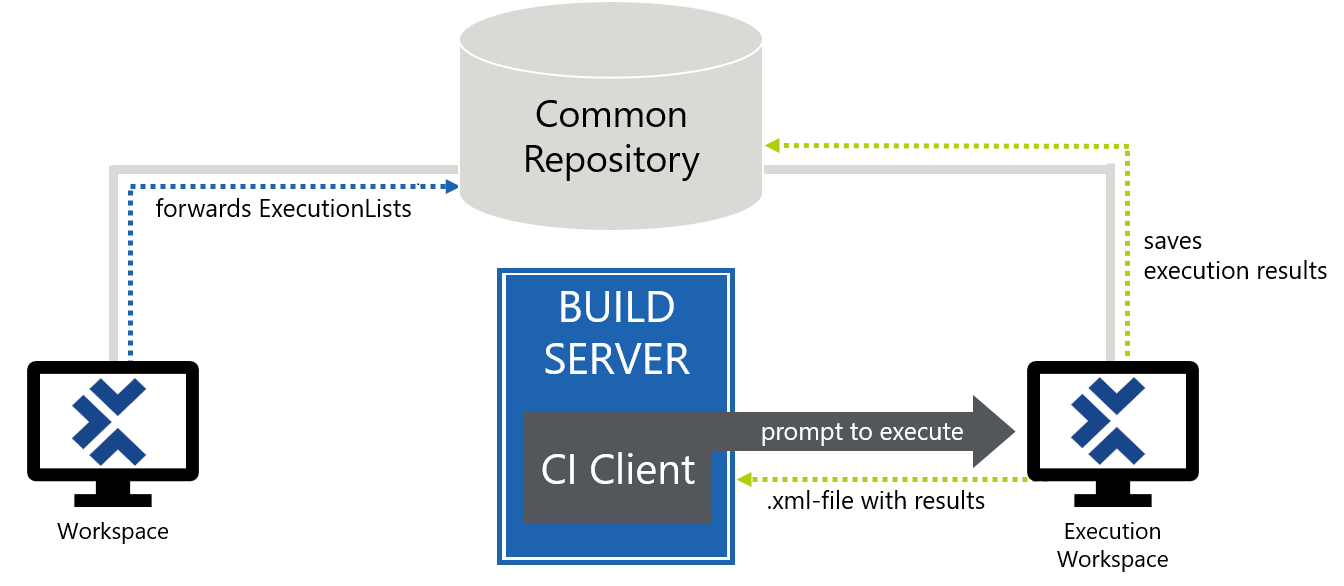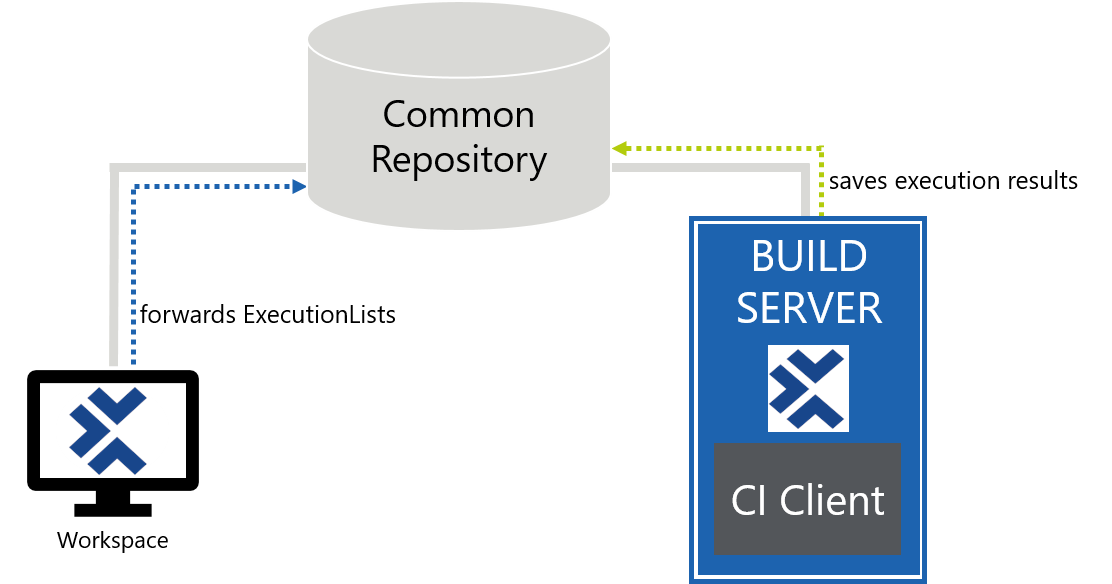Tosca Continuous Integration
Tosca Continuous Integration allows you to trigger the execution of your automated Tosca TestCases without user input. It supports you in your Continuous Integration & Delivery efforts by minimizing testing time and effort.
Depending on your IT infrastructure, you can implement Tosca Continuous Integration in one of the following ways:
-
Run the test execution via Remote Service, i.e. on a separate execution workspace.
-
Use Tosca Continuous Integration together with Tosca Distributed Execution. In this case, several Tosca Distribution Agents will execute your tests, which speeds up the process.
You can also execute on your build server, provided that your build server runs on a Windows operating system.

|
For information on Tosca Continuous Integration licensing, please refer to your Tricentis sales contact. |
How it works: test execution via Remote Service
A tester creates an ExecutionList in Tosca Commander. Tosca Commander transfers the ExecutionList to the common repository:
-
In a single-user workspace, the system transfers the ExecutionList when the user saves their project.
-
In a multi-user workspace, the system transfers the ExecutionList when the user checks in their workspace.
Once you launch the execution of your tests, the build server calls up the Tosca Continuous Integration Client. You can launch your tests from Windows operating systems or from non-Windows operating systems.
The Tosca Continuous Integration Client prompts the execution workspace to execute the ExecutionList.
The execution workspace saves the result to the common repository. It also transfers the test results as an xml file to the build server.
For information on how to set up Tosca Continuous Integration for Remote Service, see chapter "Set up test execution via Remote Service".

Test execution on a separate execution workspace
How it works: test execution with Tosca Distributed Execution
Tosca Distributed Execution is available for multi-user environments. This means that you and other users share a common repository, which is a database that stores test data and test results.
First, you create a TestEvent in Tosca Commander and check in the changes to the common repository. A TestEvent contains several ExecutionLists.
Once you launch the execution of your tests, the build server calls the Tosca Continuous Integration Client. You can launch your tests from Windows or non-Windows operating systems.
The Tosca Continuous Integration Client prompts the Tosca Distribution Server to execute the tests.
The Tosca Distribution Server distributes these ExecutionLists between the available Tosca Distribution Agents.
Once a Tosca Distribution Agent has executed an ExecutionList, the system saves the results to the common repository.
During the execution, the Tosca Distribution Server collects the test results. The build server regularly polls the Tosca Distribution Server for test results, and collects all results when the execution finishes.
For information on how to set up Tosca Continuous Integration with Tosca Distributed Execution, see chapter "Set up test execution with Tosca Distributed Execution".

Tosca Continuous Integration with Tosca Distributed Execution
How it works: test execution on your build server
A tester creates an ExecutionList in Tosca Commander. Tosca Commander transfers the ExecutionList to the common repository:
-
In a single-user workspace, the system transfers the ExecutionList when the user saves their project.
-
In a multi-user workspace, the system transfers the ExecutionList when the user checks in their workspace.
Once you launch the execution of your tests, the build server calls the Tosca Continuous Integration Client.
The Tosca Continuous Integration Client on the build server then executes the ExecutionList and writes the result into the common repository.
For information on how to set up Tosca Continuous Integration for test execution on the build server, see chapter "Set up test execution on the build server".

|
For test execution on the build server, your build server needs to run on a Windows operating system. If it does not, you need to set up Tosca Continuous Integration via Remote Service or with Tosca Distributed Execution. |

Test execution on the build server